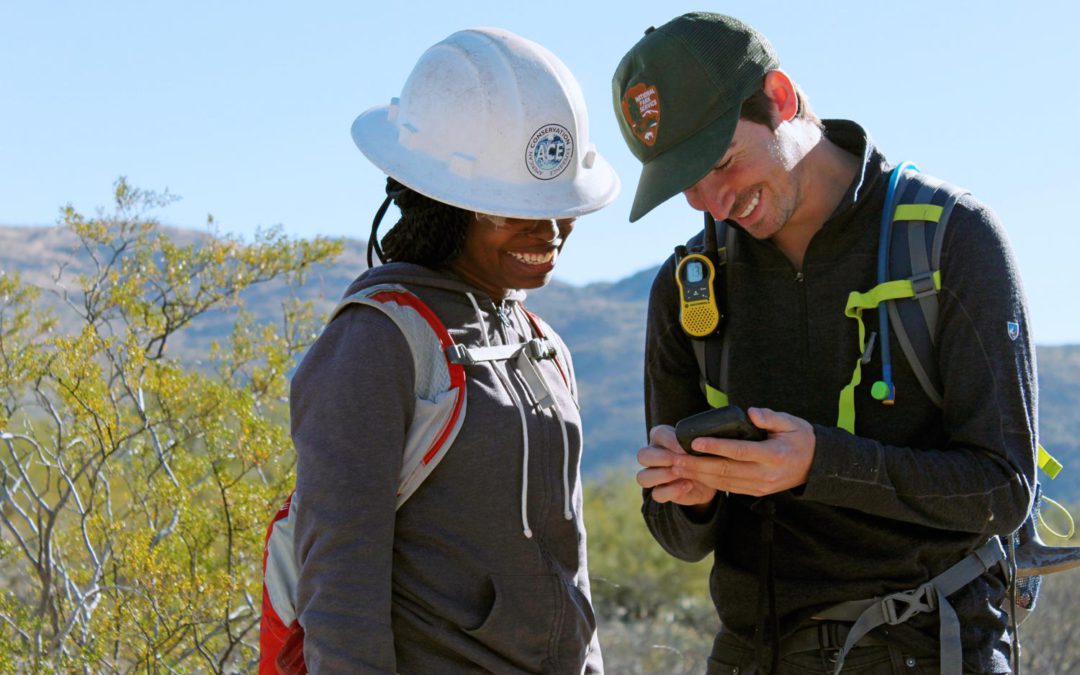Recently, we met with our crew at Saguaro National Park in southern Arizona, where 8 corps members have been stationed for a month long project. The crew has been performing invasive species transects alongside employees of the National Park Service, among other tasks. Last week, the group was specifically focused on locating the Matla starthisle, a plant listed as a noxious weed in Arizona. However, they also kept an eye out for other invasive plants such as sow thistle and buffelgrass.
To begin a transect, the crew forms a line with about three meters between each member, and then they proceed through the desert and hunt for the specific plants. If a plant is discovered, its location is noted on a GPS unit. The primary goal of the crew during this project is to focus on the removal of invasive species, but they will also help to perform saguaro and border impact surveys and attend informational lectures. “The NPS staff we are working with are great. Working closely with them provides us a great opportunity to learn about the area from professionals,” explained crew leader Marianne Keith, “and staff at this park in particular has been great about incorporating that educational aspect into the work, which is really important to me.”
The removal of these species is important because an invasive plant has the ability to spread aggressively outside its natural range, which can disrupt natural habitats by choking out native plant life, altering ecosystems, and thereby reducing biodiversity. The work required to remove invasive species can be repetitive, but an intimate knowledge of all the plant species in the area is imperative in order for the corps members to be as efficient as possible. Identifying plants can be especially difficult in the Sonoran desert, which is the most biologically diverse desert ecosystem in North America with over 2,000 native plant species!
Corps members find this kind of work very rewarding. “This is my favorite project I’ve been on so far.” said corps member Autumn Rooks. Autumn started her term with ACE working for our North Carolina branch, but briefly relocated to the Arizona branch for the remainder of her term. “We’ve been learning how to identify so many different plant species that I’ve never seen before, like creosote, London rocket, palo verde, and many types of cholla.”




